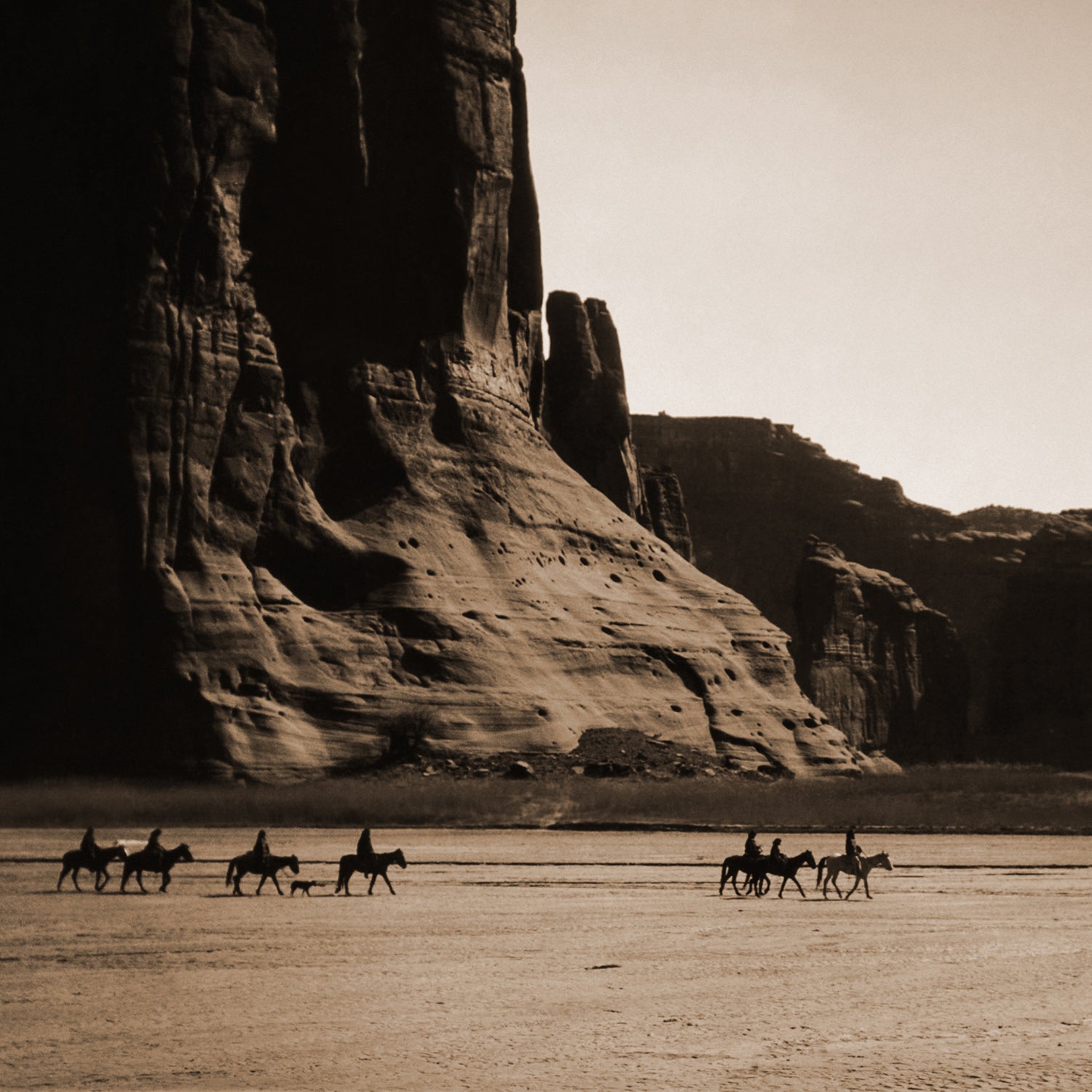On September 18, 1996, Orrin Hatch was livid. President Bill Clinton had just designated 1.88 million acres of southern Utah canyon country as the Grand Staircase-Escalante National Monument. Hatch had spent two decades as Utah’s senator resisting federal oversight of the public land in his state, and by his standards, Clinton’s use of the Antiquities Act was egregious.
“This is the mother of all land grabs,” . “The president may have some statutory authority to take this action, but he certainly does not have the moral authority.” On the Senate floor, he compared the designation with the attack on Pearl Harbor.
Hatch was similarly incensed when another million-plus-acre monument, Bears Ears, was designated by another Democratic president, Barack Obama, in 2016. But the 83-year-old senator is approaching vindication. Last week, President Donald Trump as part of a national-monuments review Trump had called for back in April. The executive order charged Interior Secretary Ryan Zinke with revisiting all 27 national monuments over 100,000 acres designated since 1996, parameters that targeted Grand Staircase and the large monuments that followed.
The decision was consistent with Trump’s embrace of unfettered fossil-fuel development and his distrust of environmental regulations and science. These values—which contradict numerous economic and scientific norms widely held today—hark back to the time when Hatch’s political career began.
From the mid-1800s until the 1960s, the open, federally owned spaces of the West were the domain of industry and agriculture. White settlement of the region was instigated by a series of Homestead Acts that promised free land to anybody who plowed, irrigated, logged, ran cattle on, or dug stuff out of it. Folks passed on the driest and most rugged terrain, like Grand Staircase-Escalante, so those parcels ended up in the hands of federal agencies like the Forest Service and the Bureau of Land Management. Washington was still inclined to incentivize commercial activity there, so it offered leases to miners, loggers, and ranchers that were subsidized by taxpayers.
The BLM, officially founded in 1946, was particularly oriented toward extractive use. When it was formalized, it was jokingly called the Bureau of Livestock and Mining. “The BLM was a fairly toothless organization during the early years of its existence,” says Adam Sowards, an environmental historian at the University of Idaho. “That was ensured by friendly Western politicians who didn’t want regulations to hamper livestock interests.”
Five days after Trump was inaugurated, Hatch offered up two suggestions in their first in-person meeting: Nominate Neil Gorsuch to the Supreme Court and chop the monuments.
A suite of environmental regulations quickly changed things. Beginning in 1964, legislation such as the Wilderness, National Environmental Policy, and Endangered Species acts lessened industry’s chokehold on public land. In October 1976, Congress passed the Federal Land Management and Policy Act that for the first time mandated public land—overgrazed BLM plots in particular—be managed to promote not just extraction and ranching, but also recreation and conservation.
A month later, Orrin Hatch was elected to the Senate.
From there, he dove headfirst into the Sagebrush Rebellion ethos of the 1970s and '80s, which arose in direct opposition to legislation like FLPMA. He sponsored legislation, in 1979, that called on the transfer of federal land to state ownership. (It went nowhere). Hatch’s view that federal oversight shouldn’t hamper industry clashed with Clinton’s Grand Staircase designation. A in 1997 determined the value of energy reserves in the monument at over $345 billion in 2016 dollars. To Hatch, the stroke of a president’s pen had scuttled that economic opportunity.
Twenty years later, Trump’s candidacy was predicated on anxiety-ridden nostalgia that emanates in some corners of the West. Before Hatch joined the Senate, public land was a place where an American could work hard and make some money, and the government largely stayed out of the way—except by providing those discounted leases. But 40 years of climate science, ecology, and reckoning with tribal relations has given us a more complex understanding of the landscapes people hold dear. As Trump’s election shows, some long for the old days when they didn’t have to consider endangered species, climate change, and water contamination.
“What’s culminating in part is 40 years of frustration from Western conservatives,” Sowards, of the University of Idaho, says. “They’ve lost a dominant voice in defining policies that govern public lands. The strategy to cut back the monuments, I think, is a broader symbol of being unhappy with the direction of environmental policies. The Wilderness Act, NEPA, FLPMA—all of these things seemed to create a new set of priorities.”
Hatch capitalized on that frustration to earn Trump’s loyalty. As the Deseret News reported, Hatch quickly became one of Trump’s . Five days after Trump was inaugurated, Hatch offered up two suggestions in their first in-person meeting: Nominate Neil Gorsuch to the Supreme Court and chop the monuments. When Trump first announced the monument review, in April, he did so with Utah dignitaries by his side.
“I also want to recognize Senator Orrin Hatch, who, believe me, he’s tough,” Trump said that day. “He would call me and say, ‘You gotta do this.’ Is that right, Orrin? He doesn’t stop. He doesn’t give up.”
Trump is scheduled to visit Utah in early December to deliver the official Bears Ears and Grand Staircase verdict. It appears that, after his Sagebrush Rebellion apprehension simmered for 40 years, Hatch has finally found another rebel—one who prioritizes the old-school, industry-first ethos of a century ago. ����
In September, Interior Secretary Ryan Zinke gave a speech at the conservative Heritage Foundation in which he laid out the . “This administration and the president believe in American energy dominance,” he told the audience. “Our goal is an America that is the strongest energy superpower this world has ever known.”
One of the doesn’t see it that way. “‘Energy dominance’ means they don’t understand the real world,” says Daniel Kammen, who leads the Renewable and Appropriate Energy Laboratory at the University of California, Berkeley. “I can’t speak to their thinking, but it doesn’t stand up to even rudimentary market analysis.”
Kammen studies energy systems around the world, and says nations are prioritizing renewable energy, natural gas, and energy efficiency. Trump, meanwhile, is focusing almost exclusively on easing regulations for coal (for which there is little demand), oil, and gas.
A leaked draft of Interior’s five-year strategy mentions climate change not once.
What does modern energy dominance look like? Take China. “They’re investing an extra in renewable energy,” Kammen says. “They’re the largest manufacturer of solar panels and battery powered vehicles, and they’re vehicles entirely.” Contrasting with Trump’s America-first approach is China’s . Since Trump pulled the U.S. out of the Paris climate accord, China has sought to dictate energy policy among nations who adhere to the conclusions of climate scientists. Trump’s embrace of fossil fuels, on the other hand, is stoked by his cabinet’s .
Trump’s cabinet has largely equated fossil fuel development to more jobs, particularly in rural areas like the West. In his speech to the Heritage Foundation, Zinke emphasized a smoother permitting process for energy projects on federal land. “With President Trump in office, we’re looking at how we can be a better business partner with industry, and we’re finding ways to get to ‘Yes’ without sacrificing our stewardship responsibilities,” he told the audience.
His backlog of frustrated miners and drillers may be nonexistent, though. In 2016, BLM had leased 27.2 million acres to oil and gas firms—53 percent of them sat idle. A global oil glut means is unlikely to yield the $1 billion GOP lawmakers hope for.
The Administration's fossil-fuel ideology showed up again in a recent review of Department of the Interior policies that supposedly .” The report outlines reasoning for decisions such as canceling an Obama-era moratorium on new coal leases, but it doesn’t discuss cultivation of the fastest-growing energy sectors—renewables. Boosting American wind and solar capacity is not mentioned, and the 43-page report features just one paragraph about climate change. A leaked draft of Interior’s five-year strategy mentions climate change not once.
The pro-energy mandate has spread to other agencies that oversee public land. The Forest Service, for instance, this week announced it plans to end Obama's ban on new uranium mining leases in the forests around Grand Canyon National Park. Kammen contrasts this stance with the way and use their public land to build clean-energy systems in conjunction with local universities. Those arrangements support research and development while creating jobs.
The Interior’s extraction bent was apparent when Zinke reviewed the national monuments. The report often cited “traditional use,” a term Zinke equated with mineral extraction and ranching. In the Grand Staircase assessment, he noted the “several billion tons of coal and large oil deposits” contained within the monument, and wrote that “the boundary should be revised.”
When Trump decided to act on that suggestion, he gave Hatch a call.


